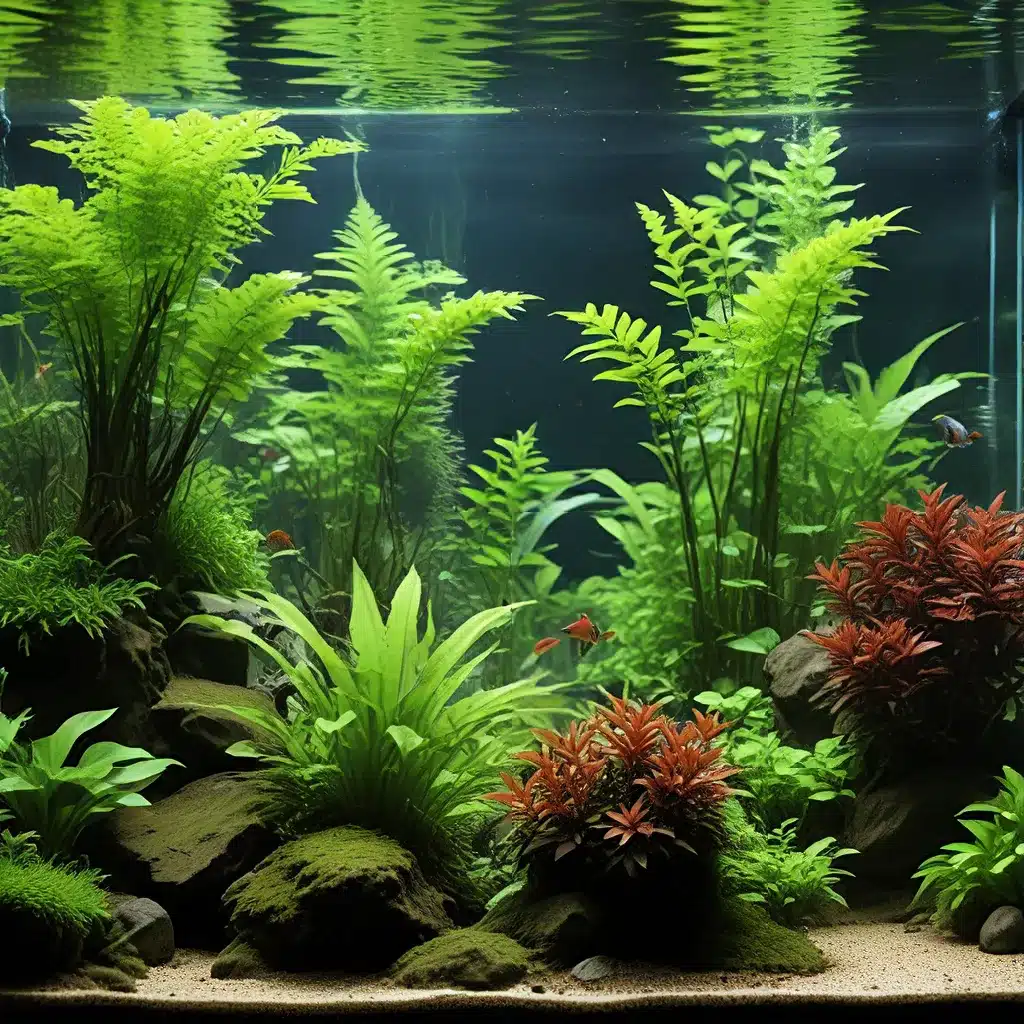
Cultivating a Harmonious Aquatic Ecosystem
Creating a vibrant and thriving aquarium is a delicate balance between the needs of its fish inhabitants and the aquatic plants that bring life to the underwater world. As aquarium enthusiasts, we strive to curate an enchanting oasis where these elements coexist in perfect harmony. This guide will explore the intricate art of selecting compatible plant species and ensuring they thrive alongside your aquatic companions.
Understanding Plant-Fish Compatibility
When it comes to populating your aquarium, the compatibility between fish and plants is a critical consideration. Some fish species may exhibit behaviors that can disrupt or damage certain plant varieties, while others coexist peacefully. By understanding the unique needs and behaviors of both fish and plants, you can assemble a cohesive and visually stunning aquatic ecosystem.
Identifying Plant-Friendly Fish
Certain fish species are known for their plant-friendly nature, posing minimal risk to the health and integrity of your aquarium’s vegetation. These include peaceful community fish such as tetras, corydoras catfish, and dwarf cichlids. These fish generally prefer to graze on algae or leave plants undisturbed, making them ideal companions for a thriving planted tank.
On the other hand, some fish species can be detrimental to aquatic plants. Aggressive, territorial fish like certain cichlids or large, boisterous fish may uproot or consume delicate plant matter. Additionally, herbivorous fish like plecos, parrotfish, and some types of goldfish can devour plant foliage at an alarming rate, leading to a denuded aquascape.
Choosing Plant Species Wisely
Just as fish compatibility is crucial, selecting the right aquatic plants for your aquarium is equally important. Some plant varieties are more resilient and can withstand the occasional nibble or disturbance from fish, while others are more delicate and require a more meticulous approach.
Hardy, fast-growing plants like Java moss, Anubias, and Amazon swords can often withstand the occasional nibble from fish. In contrast, delicate, slow-growing plants like dwarf hairgrass and Cryptocoryne species may require more protection from your aquarium’s inhabitants.
By carefully selecting a balanced mix of hardy and delicate plant species, you can create an aquascape that is both visually stunning and resilient to the natural behaviors of your fish.
Maintaining a Balanced Aquatic Ecosystem
Achieving and maintaining the delicate balance between fish and plants in your aquarium is an ongoing process. Factors such as water parameters, nutrient availability, and lighting all play a crucial role in sustaining a thriving underwater oasis.
Harnessing the Nitrogen Cycle
At the heart of a balanced aquarium lies the nitrogen cycle, a natural process facilitated by beneficial bacteria. These bacteria break down fish waste and other organic matter, converting it into less harmful substances that can be absorbed by your aquatic plants. By understanding and managing this cycle, you can ensure your aquarium’s water quality remains pristine, supporting the health of both your fish and plants.
Optimizing Water Parameters
Maintaining the appropriate water parameters is essential for the well-being of your aquarium’s inhabitants. Factors such as pH, temperature, and dissolved oxygen levels must be carefully monitored and adjusted to create an optimal environment. By aligning these parameters with the specific needs of your chosen fish and plant species, you can foster a harmonious and thriving aquatic ecosystem.
Providing Adequate Lighting
Lighting is a critical component in the success of your planted aquarium. Different plant species have varying light requirements, ranging from low-light tolerant species to those that thrive in high-light environments. Selecting the appropriate lighting system and ensuring its proper placement and duration can help your aquatic plants flourish, contributing to the overall aesthetic and health of your aquarium.
Enhancing the Aquascape
Beyond the harmony between fish and plants, the design and layout of your aquarium can have a significant impact on the overall visual appeal and functionality of your underwater oasis. Incorporating thoughtful aquascaping techniques and strategic decor can elevate the experience for both you and your aquatic inhabitants.
Leveraging 3D Backgrounds
The integration of a 3D background can transform the visual dynamic of your aquarium, creating a sense of depth and immersion. These specialized backgrounds not only enhance the aesthetic appeal but can also provide additional surface area for beneficial bacteria to thrive, ultimately improving water quality and supporting the overall health of your aquatic ecosystem.
Exploring B-Models and E-Models
Aquarium enthusiasts have a wealth of options when it comes to decorative elements, ranging from B-models (biologically functional models) to E-models (aesthetically pleasing models). By strategically incorporating these elements, you can create a visually stunning aquascape while also meeting the practical needs of your fish and plants.
Achieving the Perfect Balance
Crafting a captivating and thriving aquarium is a delicate dance between art and science. By understanding the compatibility between fish and plants, mastering the nuances of water parameters and filtration, and leveraging the power of strategic aquascaping, you can cultivate an underwater oasis that captivates the senses and provides a harmonious home for your aquatic companions.
Remember, the journey of aquarium keeping is an ongoing process of learning, adaptation, and appreciation for the beauty of the underwater world. Embrace the challenge, explore new techniques, and discover the profound joy that comes with maintaining a balanced and flourishing aquatic ecosystem.

